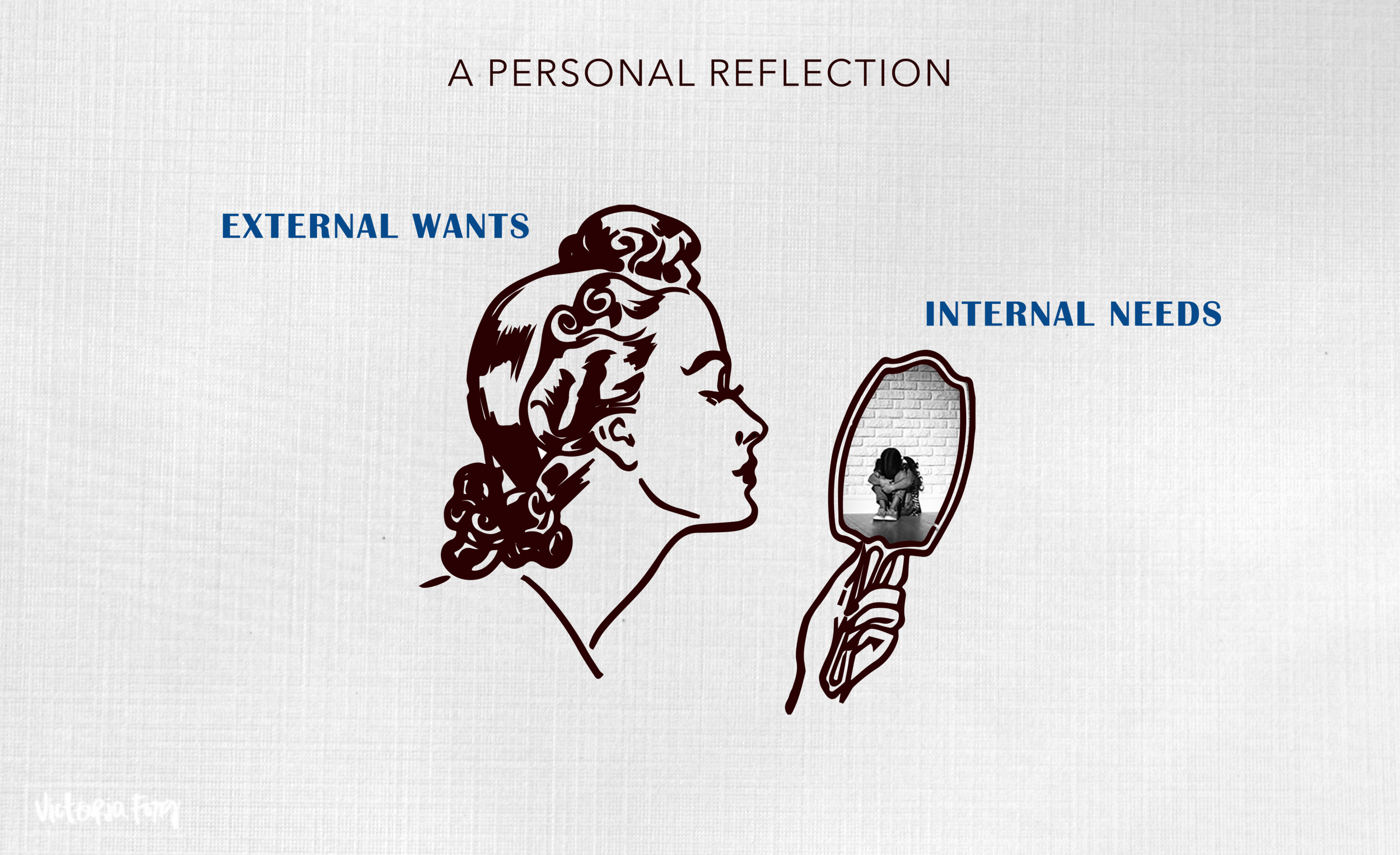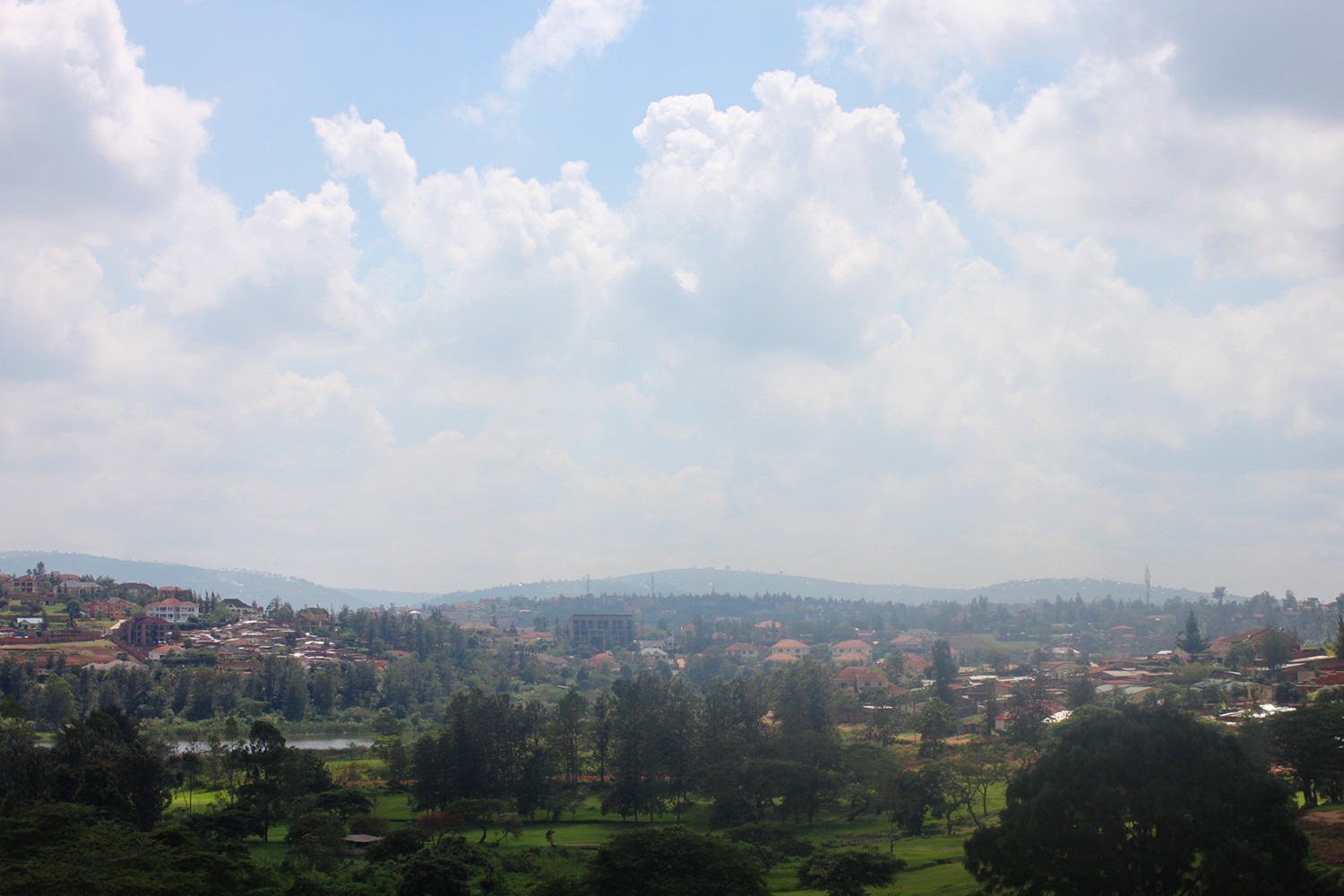Feeding the Beast Within…
Unconscious Consumerism
To be unaware of the sustainability movement in this day and age would require you to be living in a coal mine somewhere on the outskirts of Wyoming. Or hiding behind the white walls of Capital Hill — ignorance certainly is not specific to any socioeconomic class. I’d like to idealize that most people can fathom how “unconscious consumerism” can be destructive to our culture and planet. There are a plethora of reports on how the polychlorinated biphenyls (PCBs) and polycyclic aromatic hydrocarbons (PAHs) released in our water supplies are toxic endocrine disruptors; how humans have been the primary cause of the spike in greenhouse gas emissions over the last 150 years; and how we would need about 5 Planet Earths for every human to sustain a typical All-American lifestyle. However, as someone who has been in the medical/scientific research field for the majority of my life thus far, I don’t think the way humans consume is always entirely under our conscious control. Constantly blaring warning signals may even aggravate one’s conscientious capabilities for making healthier decisions (e.g. the impact of stress on the HPA axis of the brain).
Design for change
As observed through my lens of bias, I think that there is a serious human crisis of unresolved needs plaguing our culture that is being artificially resolved with manufactured wants. “Fashion, Sustainability, Design: Design for Change” is a solid read for understanding all facets of sustainability in the consumer industry — from the design philosophy, sourcing of materials, textile selection, and production methods. But I think the chapter on “Needs” gets to the core of this chronic abuse of overconsumption (aka addictions), which applies the ideologies of economist Manfred Max-Neef and his taxonomy for human-scale development in communities with limited resources. I’ve also provided an example from my personal experience on how I’ve come to resolve some of my counterproductive habits through the identification of a core need. Hopefully, I can shine a light on any misunderstood aspects of our global sustainability concerns.
Manufactured wants vs Real needs
This excerpt from the book sums up the reality of manufactured wants versus real needs:
“Conventional growth-focused economic wisdom promotes human craving for novelty and things as both natural and desirable. Yet humans’ desire for cyclical variety is easily manipulated by commerce. The cultural message of growth pervades our daily lives, clouding our perceptions, so that cutting through the sheer volume of commercial clutter to distinguish between real needs and manufactured wants is far from easy. But Manfred Max-Neef provides a view of human needs and motivations that helps us reflect deeply on the industry, design practice and ourselves. ”
Chilean economist Manfred Max-Neef details his now famous phrase "the economy is to serve the people, not people serve the economy."
MANFRED MAX-NEEF’S HUMAN SCALE DEVELOPMENT
Manfred Max-Neef was a German-Chilean economist and environmentalist mainly known for his human development model based on fundamental human needs. Max-Neef started his career as a Professor of economics at the University of California, Berkeley in the early 1960s, with much of his research done as a visiting Professor in various universities around Latin America and the United States. The bulk of his ideologies grew from his time living and experiencing the life of various poverty-stricken communities in South America; hence, his focus was on the development in the Third World. He criticized the inappropriateness of applying conventional models of development, which have contributed to poverty, debt and ecological disasters for Third World communities. And that at present we are going through not only an economic-financial crisis but “a crisis of humanity.” His fundamental needs taxonomy was a tool to help people reconcile their needs while adjusting to the limited availability of resources.
Max-Neef proposed that all human needs are universal and immutable, but the strategies to create “satisfiers” are flexible and negotiable. Based on the source of capital, however, they can be “sustainable” or “unsustainable”.
SATISFIERS VS DESTROYERS
This is a description of Manfred Max-Neef’s taxonomy of human needs from the sustainable fashion book, and how it can apply to your sustainable growth (especially about the part concerning “poverty of the whole”):
“Max-Neef’s taxonomy of human needs was developed from his work with small communities in South America, to help identify their “wealths” and “poverties” and then to work on how these may be best maximised and minimised respectively. He identified nine fundamental human needs and myriad “satisfiers” (which fall into four existential states: being, having, doing and interacting). Max-Neef notes that one satisfier may address several needs at once and benefit the whole, while “destroyers” may seem to satisfy a need but in fact inhibit several other and bring poverty to the whole.”
Max-Neef’s Taxonomy of Fundamental Needs and Satisfiers
I’ve reproduced Max-Neef’s Taxonomy on Google Sheets so that you can conveniently track the satisfiers that you have resolved:
The Manfeed Max-Neef taxonomy that I’ve recreated on Google Spreadsheets for helping you identify and track your fundamental human need that you’ve satisfied so to better understand which aspects of your life that you need work on to avoid maladjusted behaviours.
A PERSONAL REFLECTION ON UNSUSTAINABLE HABITS
Counterproductive Coping Mechanisms
I’ve come to realise that my excessive consumer habits were a coping mechanism to counter anxieties influenced by an onslaught of self-deprecating thoughts from an insecure sense of identity. Ergo, I used my desperate hunt for one as an excuse to uninhibitedly seek novel purchases, other people’s validation, and (for a period) sedating substances to dampen the unbearable feelings of unease. The benefit, however, has been an openness to interacting with a whole smorgasbord of folks who have provided some sort of direction and a familial sense of belonging. Fashion, on the other hand, was a self-empowering, fresh set of armor; it was the disguise that allowed me to quickly shape-shift into an upgraded version of myself. However, as we’re all probably familiar with, most forms of externally-derived comfort provide a dose of dopamine that requires a constant fresh supply to sustain the positive feedback.
Mandatory Mirroring
The number one method that has resolved a good portion of my anxieties was to find mentors (in real life) that mirrored my greatest potential, highest ideals, and most importantly resonated with my sense of play. That has been my fast-track pass to breaking destructive behavioral patterns that were primarily emotional crutches. For those of us who were raised to dysfunction through the motivation of external validation (whether it be good grades, high salaries, attractive partners, etc.), the ultimate goal of proper mirroring is to help one align with their core reserves of self-love. This foundational sense of self begins formation during early childhood and requires a parent or primary caretaker to properly mirror back your personal experience through reaffirming behaviors (e.g. the excitement of the budding dancer instead of rage as a hyperactive nuisance). However, based on my personal experience, this can also be cultivated later in life — and maybe it’s meant to be a lifelong process. Nevertheless, all humans are creative forces that require consistent interconnectivity to sustain healthy habits. Consuming is just one side of the same coin of connection (the other side being creation) which can be harnessed beneficially as equally as it can be destructive. And I’ve come to realize at the ripe age of 30+ that a prerequisite to healthy connecting is to be in touch with an unshakeable sense of self.
Conscious Communities
When it comes to interactions that foster your core identity, there are plenty of nice people to choose from but only the right tribe can support your evolution — as obvious as that sounds. And you’re welcome for my perpetual experiences of trial and error. If you find that you are a social chameleon, and/or are constantly seeking external validation (be it new purchases, rewards, relationships, etc.) as an immediate resolution to a feeling of “emptiness,” then you may have been raised in a family that did not properly mirror back your core identity. However, I also think this is a mass issue as a result of multigenerational traumas and societally imposed belief systems. As for myself, I’d like to think that I’ve collected an amalgamation of ideas that I can call (on most days) an unshakeable core self. And this hasn’t been without the help of people that I admire, and who also resonate back a loving response. Fictional characters and public figures can be a part of your inspiration repertoire too, but intimate conversations on shared passions and similar senses of humor gives me that joie de vivre — there has not been a designer ensemble, Parisian vacation, or gastronomical creation that’s provided greater gratification than finding a counterpart who could navigate (or at least partially wade in) the expansive corners of one's personal paracosm (although I’m not opposed to most forms of a good time). This brief excerpt from Stone Medicine, a helpful resource on holistic health, helped me realign with the purpose of the choices that we make:
“Implicit in having a sense of purpose in life, with the ability to develop deep, meaningful relationships, is the need to make choices. When we leave our families and go off to school or work, we do not make friends with just anybody we meet. We seek out those people who support our own self-perception, who reflect back to us who we think we are... Our relationships are not just the result of circumstances; they are reflections of our motivations for choosing who we are going to allow into our lives... If our lives are meaningful, with satisfying, fulfilling relationships and vocations, our choices are working for us. If not, the objective observation of our motivations can help us to change.”
Personal Peace
So there you have it, my number one tip for sustainably meeting your needs on our finite, though endlessly loving Mother Earth: to make a conscious effort to connect with people who resonate the best out of you, and not just out of circumstance. And to not be afraid of making mistakes with your interactions because it’s bound to happen — and if they don’t vibe, they aren’t your tribe and possibly a temporary lesson in disguise. Unproductive attachments (to objects, people, etc.) can be, in Max-Neef’s terms, destroyers of development (and all those hours at hot yoga sweating your ass off past disappointments will become NULL and VOID). Naturally, any social intelligence that I have is credited to my fair share of social faux pas which I’ve wallowed about for eons in my bottomless pit of toxic shame. Thank goodness for the overly benevolent souls from the Universe who have managed to help pull me out my emotional sludge. And now I present to you these transmuted nuggets of wisdom that I’ve decided to call my four Ps for personal peace (which is in itself a process-in-progress):
1. Process: how we choose to navigate life
2. People: who’s in it for the long (or short) haul
3. Place: timing and location
4. Products: meaning inspired creations.
CONCLUDING REMARKS
To end this sort of sideways approach to clearing out old skeletons from my closet, I will leave you with another excerpt from Stone Medicine that I think is a pleasant, minimalistic summary for the purpose of struggle in our sustainable self-actualisation process:
“Emotional and physical pain is intrinsic to human experience. The difficulties and tragedies we inevitably encounter are tests of our faith, devotion, and compassion. For most of us illness will be unavoidable, even if we make the effort to eat and exercise properly. At the same time, our illnesses and our pain can be our best teachers to help us discover the lessons we must learn in order to complete the curriculum for this life. Even if we are not able to cure our illnesses, they offer us a wonderful opportunity to become aware and conscious about our innermost being and to achieve a higher degree of wisdom.”
Updated in 2019





